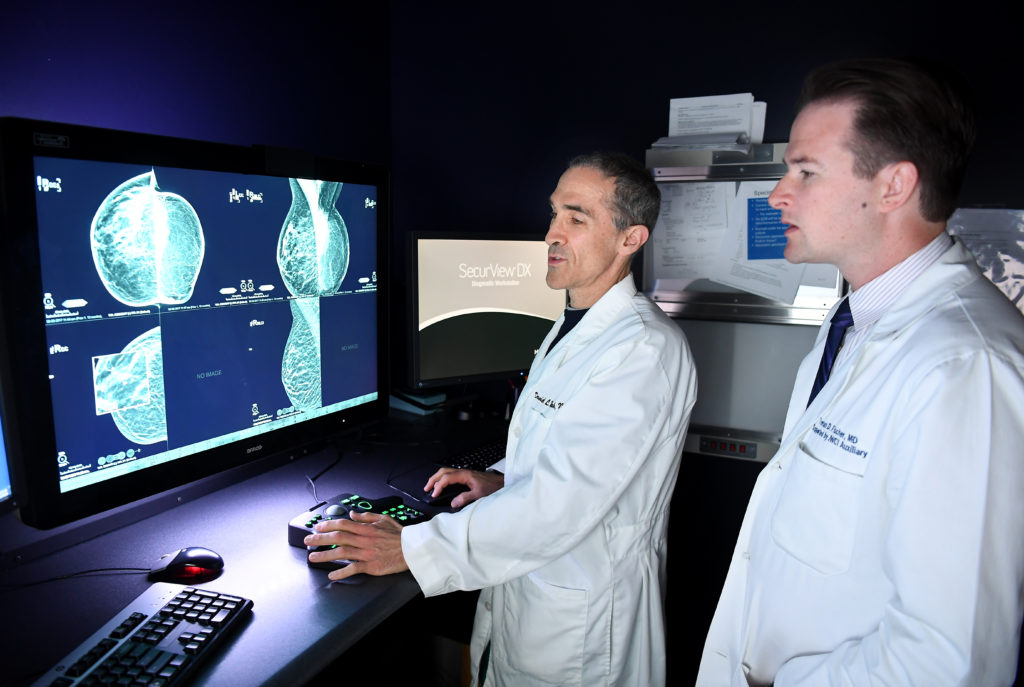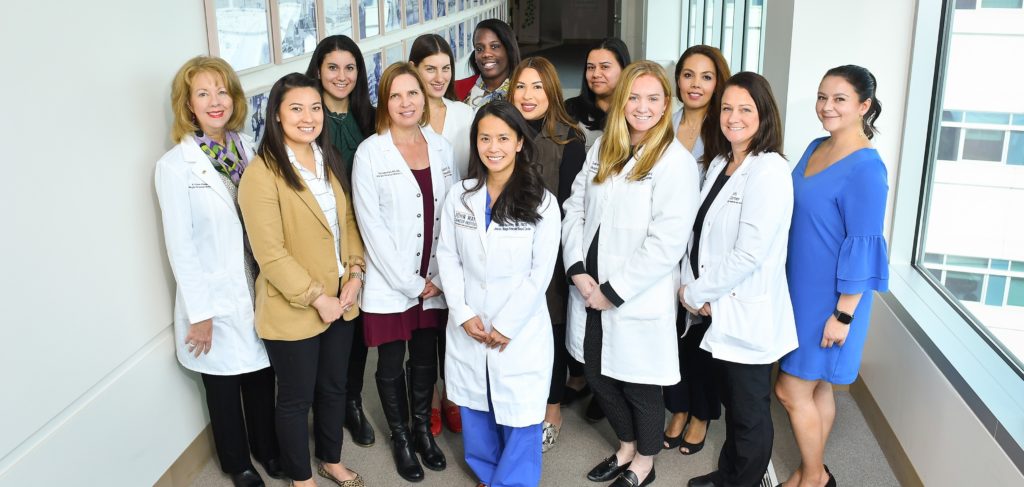Mammography
Mammograms are considered the standard of care to screen for breast cancer. In addition, mammograms are used to diagnose and evaluate a new suspicious finding or follow someone with a personal history of breast cancer. A mammogram uses compression and x-ray technology to image your breast. Undergoing a mammogram has the same radiation exposure as an individual would expect to receive from natural (or background) radiation exposure over 7 weeks. However, if you suspect you are pregnant, you should notify the technician.
Screening mammograms are typically done every year to check the breasts for any early signs of breast cancer.
Diagnostic mammograms focus on getting more information about a specific area (or areas) of concern — usually due to a suspicious screening mammogram or if the patient feels a palpable lump/mass.

About Mammograms
Current evidence confirms that mammograms offer substantial benefit for women in their 40s and older to detect cancer earlier. Mammograms are able to capture tiny changes to the breast, such as calcifications, that cannot be seen on alternative imaging.
It is important to have your mammogram done annually at the same facility. This will aid the radiologists in noticing any changes to your breast tissue and help catch any suspicious findings early on. Still, there are some limitations, due to increased breast density, and your provider may order additional testing to help completely evaluate your breasts.
Mammograms are recommended annually for women over the age of 40. Talk to your provider regarding your personal risk for developing breast cancer to determine if screening should begin before the age of 40 or additional imaging should be added.

Digital Mammography
At the Margie Petersen Breast Center, each mammography unit is equipped with a digital receptor. This allows the mammograms to utilize dedicated computers instead of conventional X-ray film. The mammograms, performed by a technologist, are then viewed electronically by one of our breast radiologists on computer screens designed for optimal viewing. In addition, the images are read in conjunction with a CAD (computer-aided detection) software, which calculates the density of your breast tissue and flags potential abnormal areas for the radiologist to take a closer look at.
Digital mammography provides a clearer and more accurate image of the breast than analog or film mammography. Digital mammograms are faster than analog film mammograms, because there is no film to develop. The image can be sent immediately to the radiologist for viewing. If the image is unclear, you will be told about it right away, and the image can be retaken. This helps reduce mammogram callbacks and, overall, stress on patients.
This leading-edge technology is the first step in the breast imaging process. If an abnormality is found, the area of concern can be imaged with additional mammograms (called spot compression). Imaging and/or procedures such as an ultrasound, biopsy, and/or MRI may be necessary to evaluate the finding, as well. These highly sophisticated and integrated services create a more efficient process allowing shorter examination times, quicker results, and ultimately more convenience for the patient.

Meet Our Breast Health Care Team
The Margie Petersen Breast Center at Providence Saint John’s Health Center brings you some of the finest breast health and cancer care in Southern California.






